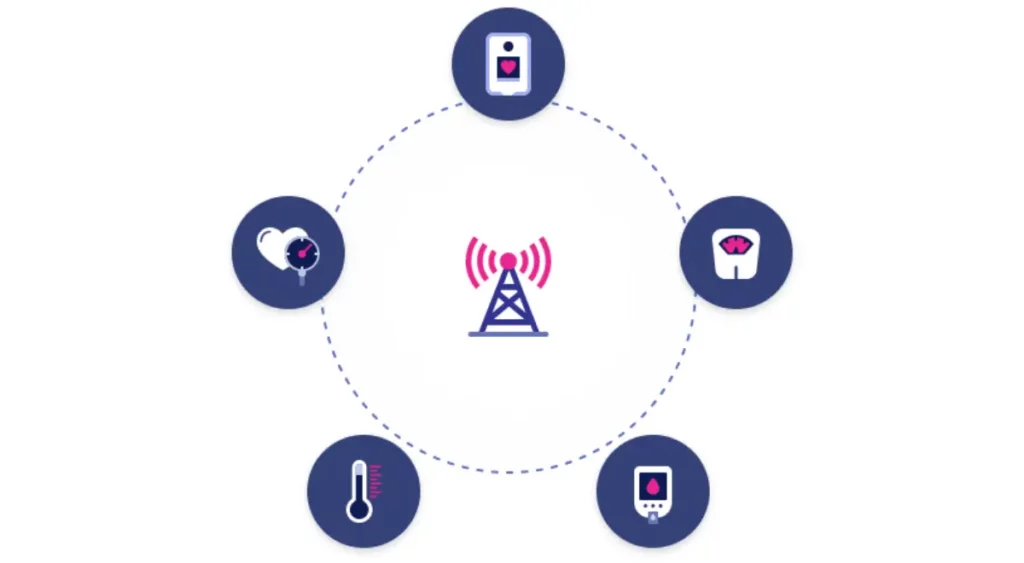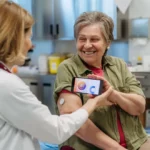Five Remote Patient Monitoring Devices

Technology upgradation in digital health platforms has led the healthcare sector through significant changes that have altered how care is provided. Remote patient monitoring helps to enhance the care delivery gaps within the healthcare system.
Being a healthcare professional, do you exert much effort to provide prompt service to your patients through remote access? Devices for remote patient monitoring surprisingly facilitate the work.
Table of Contents
ToggleWhat are Remote Patient Monitoring Devices?
Remote devices enable healthcare professionals to track, record, and examine a patient’s acute or chronic problems while away from a hospital or clinic.
Remote patient monitoring devices give a healthcare professional real-time insight into a patient’s state and take pre-emptive clinical actions. These devices lead to patient engagement and a better understanding of their health.
Why Are Remote Patient Monitoring Devices Important in Healthcare?
Health monitoring devices play a significant role for healthcare providers in interacting with patients. Service providers have the appropriate data on the patient’s chronic health condition through these devices.
It helps the care providers make appropriate treatment decisions for the patients. Likely while stressing comfort and convenience for service providers, the devices have undoubtedly lowered the costs.
Reduced readmission rates in ERs and time saved due to less travel for visiting a patient have contributed to saving the energy care providers need for their work productivity. With these devices and digital health software, service providers can better manage patients with two or more chronic conditions.
Now, let’s look at the five famous remote patient monitoring devices in healthcare that have enhanced care quality and reduced the expenses of healthcare professionals and their patients.
Top Five Remote Health Monitoring Devices
- Pulse Oximeter
A pulse oximeter helps to measure both the pulse and the light wavelength that indicates the blood oxygen level. Care providers use this device to treat patients with heart problems, lung conditions, and asthma.
Healthcare providers have a smart pulse oximeter to access the patient’s data before the appointment. It helps them to make a suitable care plan for the patients and provide them with the same when they visit, saving more time.
- Glucometer
Healthcare providers use a glucometer to track the blood sugar levels of patients who have diabetes. These devices have a sensor clipped to the patient’s finger to draw blood.
Healthcare providers keep a track record of the patient’s blood sugar levels to provide them with measures to control diabetes and immediately schedule appointments whenever needed.
- Blood Pressure Cuffs
Care providers use blood pressure cuffs to track the blood pressure levels of patients suffering from health conditions like kidney dysfunction, hypertension, or diabetes. These devices help to take a comprehensive look at the patient’s condition.
Regular blood pressure monitoring benefits healthcare providers to get a better idea about the situations that elevate the patients’ blood pressure. They keep a record of the readings to form an effective care plan.
- Thermometer
Fever is a key factor in many health conditions. A thermometer provides fast and accurate data on the patient’s body temperature to healthcare providers. It helps healthcare professionals to take the next step needed for treatment.
Although a few chronic conditions necessitate routine temperature checkups to comprehend, thermometers are used to track and fill the gaps in patients’ health-related data to monitor the risk.
- Weight Scale
With the use of weight scales in RPM, physicians keep track records of the patient’s weight changes. It helps to measure any chronic condition symptom that leads to changes in the patient’s weight.
Weight scales help physicians encourage patients who are obese to take responsibility and recognize patterns in their behavior by enabling self-management. It is essential to manage obesity because it is a significant risk factor for many diseases.
These remote health monitoring devices have been in use for years now. However, with the development of smart cellular medical devices and digital platforms, it is obvious for healthcare professionals to enhance health outcomes.
Track Patient Vitals With HealthArc’s RPM Devices
With HealthArc’s remote patient monitoring tools, physicians can manage patients’ daily healthcare data by providing them with efficient support. HealthArc’s digital platform automatically tracks the activities of the patients and updates the healthcare professional’s dashboard by generating the patient’s clinical report. Book a demo now before getting to start using one.
Frequently Asked Questions (FAQs)
RPM devices are digital tools that let healthcare providers keep track of and collect patients’ vital signs and health data from a distance. This makes it easier to manage chronic and acute conditions outside of traditional clinical settings.
They supply providers real-time health information, which:
- Cuts down on ER readmissions
- Lowers costs
- Improves the management of chronic diseases
- Gets patients more involved in their care
- A pulse oximeter checks the pulse and the amount of oxygen in the blood.
- A glucometer is a device designed to monitor blood sugar levels in individuals with diabetes.
- The blood pressure cuff monitors high blood pressure and other related conditions.
- Thermometers keep track of your body temperature to identify infections or illnesses.
- Weight Scale – keeps track of weight changes that happen with long-term illnesses like heart failure or obesity.
Continuous monitoring is most valuable to people with permanent diseases such as:
- Diabetes
- High blood pressure
- Heart disease
- COPD
- Obesity
- Kidney issues
They assist the patients to:
- Manage themselves
- Monitor important health changes
- Adhere to their treatment plans more frequently
Yes. Intelligent systems such as HealthArc directly connect devices to the provider dashboard, and it is easier to:
- Gather data
- Report it
- Coordinate care
Yes. Medicare and the majority of the private payers have an opportunity to cover the cost of such devices used as chronic care monitoring, as they use the following CPT codes:
- 99453
- 99454
- 99457
HealthArc offers a digital platform that connects multiple RPM devices, making it easier to:
- Track
- Comply
- Improve patient outcomes
Most Recent Blogs
Categories
Related Blog
- October 23, 2025 | Read Time: 12 mins
How RPM Devices Improve Hypertension and Diabetes Outcomes in Medicare Populations
Remote patient monitoring (RPM) is transforming chronic care for Medicare beneficiaries. CMS...
Learn More- August 25, 2025 | Read Time: 13 mins
How Can “One Big Beautiful Bill” Boost RPM Programs by $50B?
The “One Big Beautiful Bill,” signed July 4, 2025, directs $50B over...
Learn More- August 22, 2025 | Read Time: 17 mins
HealthArc Platform vs RPM Software Solutions
Is your healthcare organization trying to pick a remote patient monitoring solution?...
Learn More


